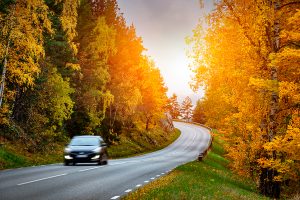 As American families continue to track developments of the pandemic, many are opting for regional travel experiences this fall.
As American families continue to track developments of the pandemic, many are opting for regional travel experiences this fall.
For some, a road trip to a national park or quaint town might provide just the right combination of taking in the fall scenery while traveling in a way that limits contact with others. However, even road trips close to home can incur their fair share of expenses, which is something many Americans are looking at more closely these days. To watch your spending on the road, consider the following trip tips:
• Plan your route carefully. Opting for a closer destination can eliminate hefty gas expenditures and wear and tear on your vehicle. For example, if you’re on the East Coast, consider the Blue Ridge Parkway in Virginia and North Carolina for breathtaking views. Similarly, if you reside on the West Coast, you might want to think about a drive along the Pacific Coast Highway to enjoy the beautiful ocean scenery.
• Look for deals on accommodations. If you’re taking a multi-day driving trip, hotel stays can begin to add up, especially in larger cities. Try to find accommodations in less densely populated areas along your route, which can include motels or even alternative accommodations such as vacation rentals. Accommodations metasearch site trivago is a great option to search for lodging deals: www.trivago.com.
• Ensure flexibility. Over the past few months, flexibility when booking travel went from being a “nice to have” to being a must. The world moves quickly, so ensure that your travel plans are able to move with it. When you are booking your accommodations, it’s important to compare deals with free cancellations. Knowing you can change your plans will offer you peace of mind. Sites like trivago provide full visibility into flexible choices, indicating whether each deal in the search findings allows for free cancellation.
• Save gas. When it comes to filling up the gas tank, a bit of comparison shopping can go a long way. Consider gas stations a bit farther from main highways. Sometimes, it pays to go off the path a bit or wait for the next rest stop. Free apps also exist that provide real-time gas comparison data based on your current GPS. You can also improve your fuel economy by keeping your car well-maintained and your tires properly inflated.
• Buy a National Park Pass. Chances are that if you’re planning to take in the great outdoors, you’ll find yourself in one of the nation’s 2,000 federal lands. If your route passes through more than one site, consider purchasing a National Park Pass. For $80, it covers entry and parking fees for one vehicle of up to four people for an entire year. With many parks resuming operations and reinstating entrance fees (usually around $25 per park), the pass is a convenient investment well worth the cost. Learn more at www.nps.gov.
As you make your plans, remember that states and jurisdictions are following different health guidelines and are at different stages of reopening, so prepare with a little research. Most importantly, have fun and enjoy the gorgeous scenery along the way. (StatePoint)
Susan Brewer Service First Real Estate (636)936-8600
Published on 2020-09-15 15:47:37

